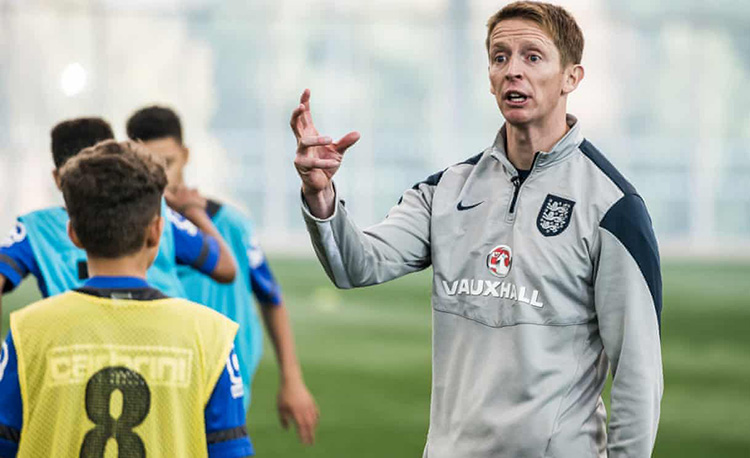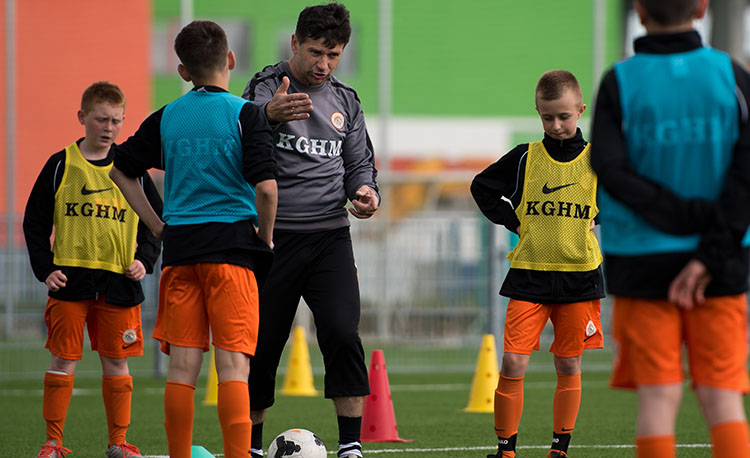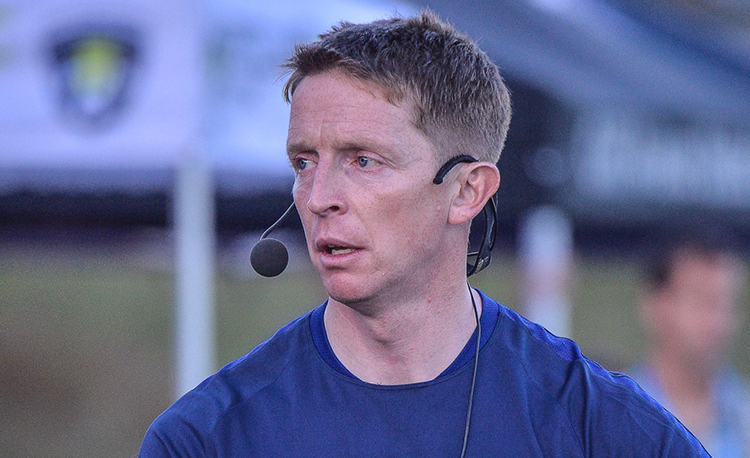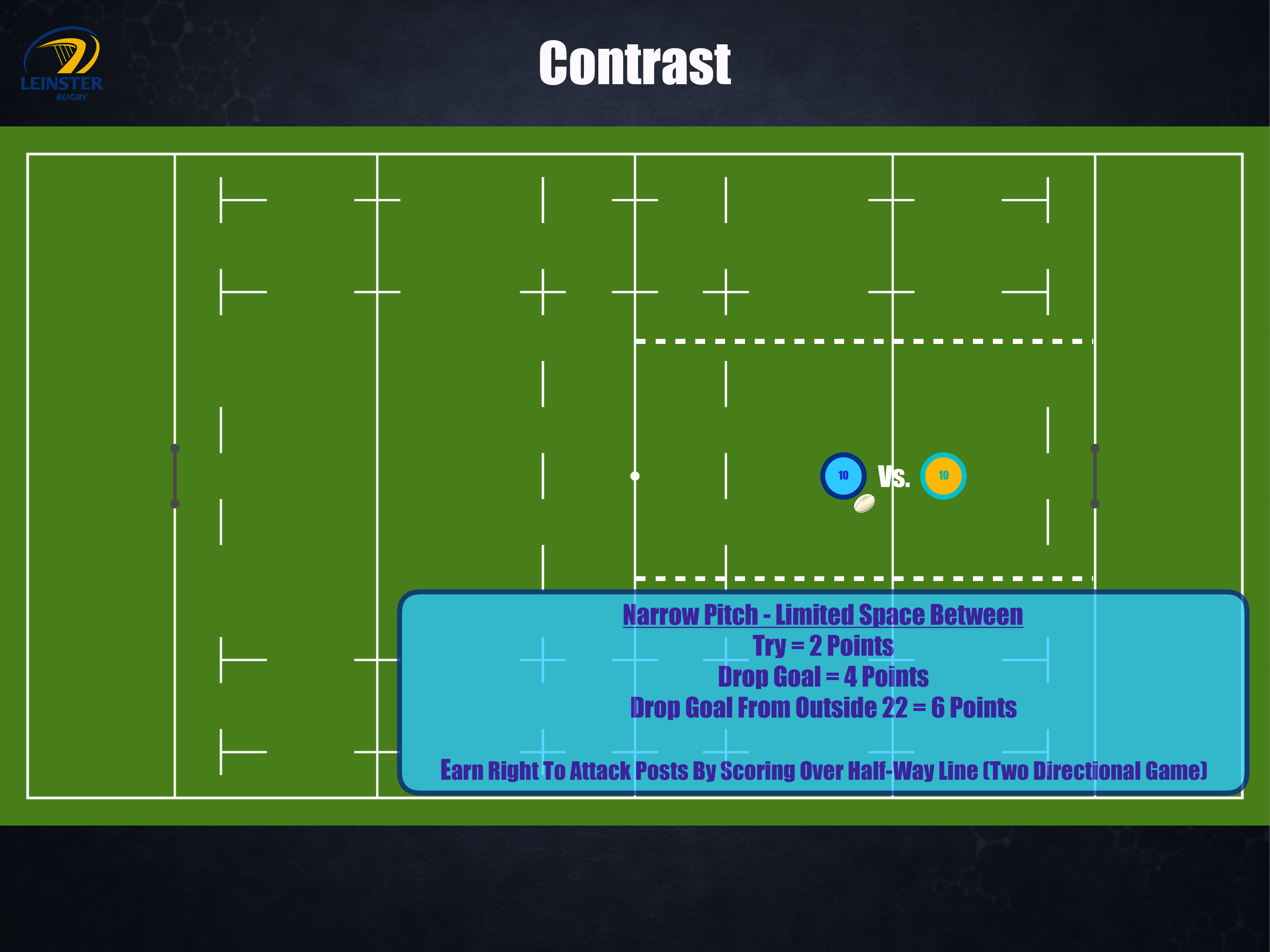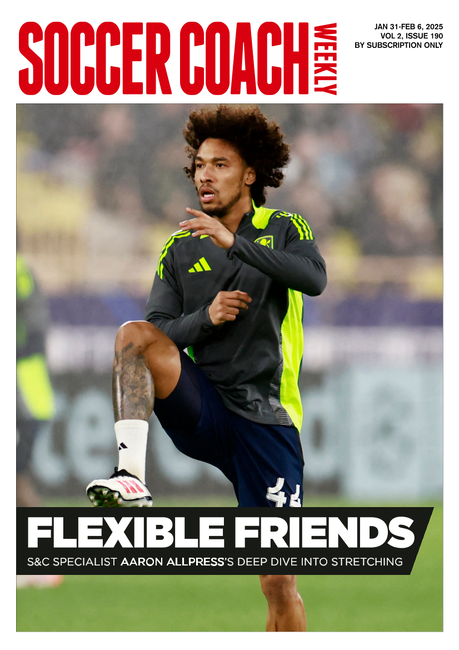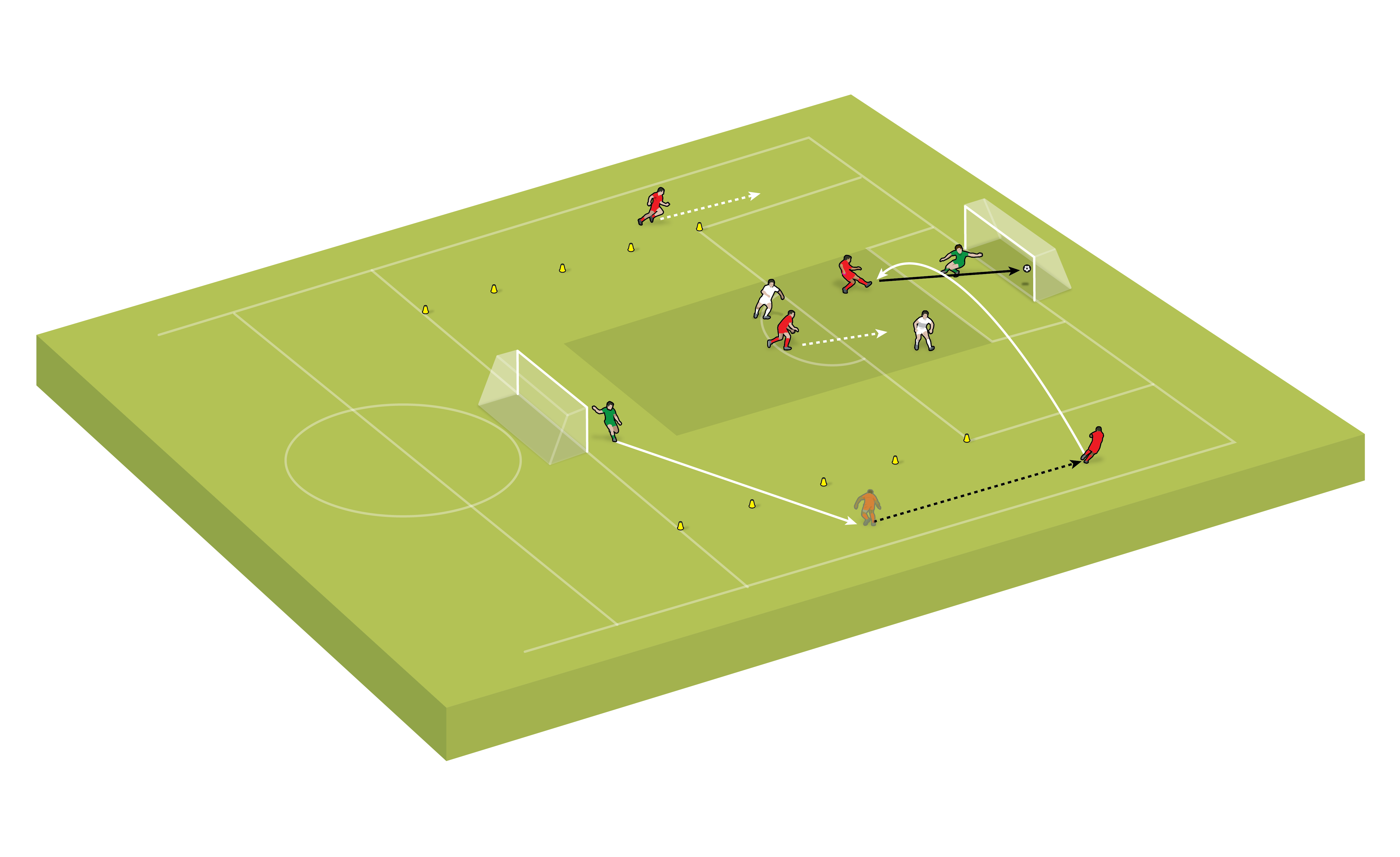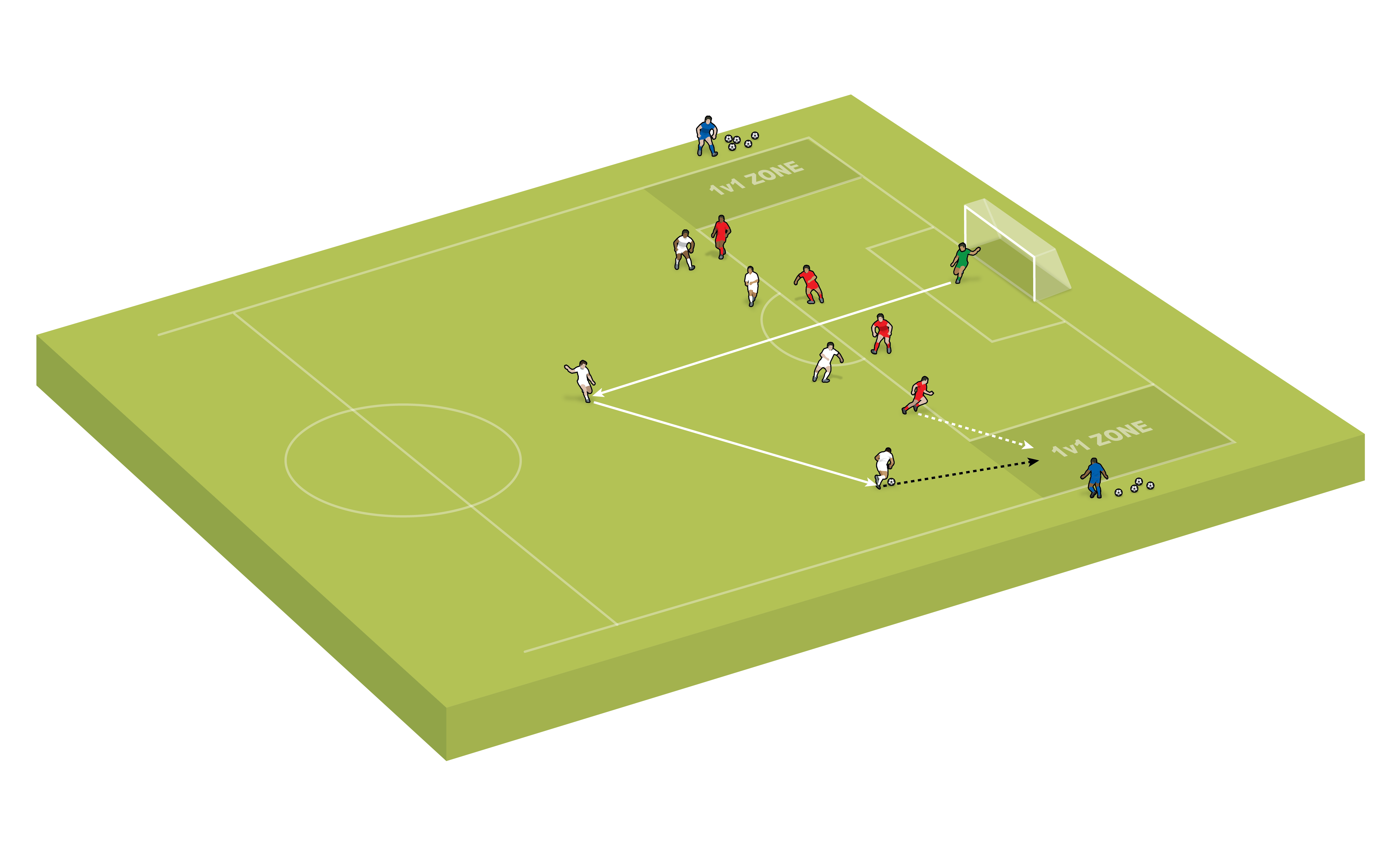The importance of being adaptable
Ben Bartlett explains - via a trip to an Irish rugby club - why being responsive to circumstances is crucial to players and coaches
Adaptability is an important quality for human beings.
Developing the capacity to be able to respond in different ways to varying situations and draw upon a broad set of skills to overcome challenges, both in life and in soccer, is a worthy pursuit - and necessary.
In a previous article I discussed the youth team who worked consistently on different solutions through their training programme, supporting the players to understand how the opposition presses and to respond with varied, appropriate tactics.
When these solutions are universally embodied and owned by the players, they become armed with both the capacity and the belief to shift behaviour in the moment, dependent upon their perceptions of what is occurring in the game.
This is easily said in a team talk; harder to develop through practice.
This challenge can be compounded by standardised practice sessions, ‘play-books’ or arbitrary top-down, coach-owned solutions to specific problems.
These common behaviours can often help adult coaches feel in control and certain; both feelings we are absented of from the side of the soccer pitch.
If our vision is for ‘robots who can manage their machine’, then these types of behaviour might be appropriate; seductive even.
"These common behaviours can often help coaches feel in control and certain..."
However, if our aspiration is for young people to develop the skillset to adapt based on the circumstances that present themselves, then an alternative approach to coaching and practice design is required.
Nesting both our team playing style and the perceived needs of the individuals into that approach enables a more context-responsive, personal and human coaching methodology that is difficult to standardise or to provide an ‘off the shelf’ recipe for.
This can be an unsettling feeling - particularly understanding that we, and ultimately our players, might benefit from the challenge of continually changing, adapting and refining our sessions and behaviours as a consequence of a commitment to support players to learn reflexively.
In 2018, I had the privilege of being invited to Leinster RFC, one of Ireland’s top rugby union clubs, who had at the time had just become European champions for a fourth time in 10 years.
I was asked to deliver a coaching session with their under-16s, supporting the coaches at the club to consider the benefits of a constraints-led approach to coaching.
This approach encourages coaches to eschew the standardised practice book, replacing it with experiences which keep rhythm with the beating heart of each individual player and the environments in which they are playing.
Related Files
Knowing very little about rugby, or Leinster as a club – let alone the individual players scheduled to be in the session – and understanding that the session was to be delivered in front of 50 coaching staff from the club contributed to contrasting emotions of anxiety and anticipation.
On arrival, I spent some time with the players and their coach to begin to understand the things they valued and which constrained the way they played rugby.
The coach was a tough, uncompromising ex-pro who, while stern and gruff, had a clear passion for the young men’s development.
He explained he only wanted the boys to carry the ball in hand, and not kick it forward, as he felt this was the most important element of their development - and that there was limited value in the players learning to kick it before learning how to carry it. The boys repeated this mantra.
I asked them if it was okay if we attempted to combine both kicking and carrying, and practice making decisions based upon the circumstances. This was agreed to.
It was an opportunity to integrate the environment design principles which have underpinned my coaching for the last decade within both the experience of the players and those of the observing coaches.
These principles – ‘The Four Ds’, see below – often lead to me delivering practices with two teams, two goals and one ball so as to represent games like soccer and rugby – the situation at Leinster was no different.
The game design is illustrated above. While I appreciate this is a soccer coaching publication, I would ask you to stay with me.
There were 20 players present so we designed a 10 vs. 10 practice on a very narrow pitch. Remember, the intention was to enable the players to practice recognising when to kick the ball and when to carry it.
The pitch was 50 yards long and only 15 yards wide. This meant there was quite a lot of space vertically but very little horizontally, as the team without the ball had 10 players covering those 15 yards.
The demands we used were set up to reward points scored from kicking more than points scored from carrying. This is at odds with the nature of rugby; within the normal laws, five points are scored for carrying the ball over the try line and only three for drop-kicking it between the posts.
We wanted to increase the value on drop-kicking; particularly those from longer distance to enable players to value this and practise it more frequently.
Hence, two points were scored for carrying the ball over the try line, four points for kicking it between the posts and six points if we kicked it between the posts from further than 22 metres out – a similar distance to being outside the penalty box in soccer.
THE FOUR D’s
Direction: Attack a goal of some description while simultaneously defending one. This ensures the inherent nature of invasion games likes soccer and rugby are evident in practice. It doesn’t mean you must play forward all the time – just understand that if we want to score at some point we will need to.
Definition: The practice is organised in the area of the pitch most frequently occurring – e.g. if we want to practice crossing and finishing, more than some other game elements, we might organise the pitch to be full width in the final third, so that players practice within the topography that such activity might most naturally occur.
Decisions: The players have decisions to make that present themselves in different ways. While naturally we might reduce or eliminate certain decisions for some players at points in sessions, ensuring we leave them with more than one choice is important if we want them to be able to respond to game-relevant information.
Difference: The above decisions are presented in different ways to enable players to develop a varied repertoire.
The final element of the game’s design was that points could only be scored at the end of the field where the posts were.
If your team were defending the posts it was necessary to work the ball up to the halfway line and then turn to face the posts and attack. This ensured the players earned the right to score by travelling with control up the pitch, a good psychological challenge.
The game was fascinating. Early on, the players mostly carried the ball in their hands. However, due to the narrow pitch there wasn’t much space between the defenders.
This meant they ran forward a short distance, got tackled, went down, got up and tried again. This became debilitating and the players quite quickly realised they couldn’t do this for the hour of the session.
Consequently, at times they were encouraged – and spotted the right moments – to kick the ball, either into touch to take up a new field position, or to chase and win the race to the ball.
As this happened more, guess what the defending team began to do? They dropped players deeper to defend the kick. This created space between the defenders for the attacking team to carry the ball.
This in turn led to players – within the added pressure of the tight pitch and observing crowd of coaches – making tactical decisions on when to kick and when to carry, to enable them to advance. This, combined with defenders attempting to prevent both, made for a fantastic game of ‘cat and mouse’.
"My challenge was to create practices that responded to the culture at Leinster..."
We played three games of 18 minutes, with breaks in between for the observing coaches to chat with the players – getting their perspective and maybe coaching some of the rugby detail that my sport-specific limitations prevented me from doing.
The third and final game was a decider. It concluded with the yellow team travelling up the pitch, earning the right to attack the posts and then scoring a six-point drop-goal from outside the ‘22’.
Six weeks later, Ireland won the Six Nations championship by beating France with an attack of 43 phases (carries and tackles), that concluded with a 45-yard drop-goal from Johnny Sexton – whose coach was in attendance when I was at Leinster…
The personal challenge for me was to create practices that responded to the culture at Leinster and combine it with my own practice-design principles, to support the players and coaches to learn within a constraints-led approach.
That is the daily challenge for us all – to design responsive soccer practices that combine the aspects the players within our environment value, hold the line with those values when things are difficult, and continually and subtly change the ways our players practice in order to support them to develop the adaptable skills necessary to contend with the challenges of sport and life.
If we dichotomise these challenges by, for example, saying “don’t kick it, only carry it”, we risk stealing from the players the opportunity to find varied solutions and learn to shift the tactics and decisions based upon the nature of each game.
Newsletter Sign Up
Coaches Testimonials

Gerald Kearney, Downtown Las Vegas Soccer Club

Paul Butler, Florida, USA

Rick Shields, Springboro, USA

Tony Green, Pierrefonds Titans, Quebec, Canada
Subscribe Today
Discover the simple way to become a more effective, more successful soccer coach
In a recent survey 89% of subscribers said Soccer Coach Weekly makes them more confident, 91% said Soccer Coach Weekly makes them a more effective coach and 93% said Soccer Coach Weekly makes them more inspired.
*includes 3 coaching manuals
Get Weekly Inspiration
All the latest techniques and approaches
Soccer Coach Weekly offers proven and easy to use soccer drills, coaching sessions, practice plans, small-sided games, warm-ups, training tips and advice.
We've been at the cutting edge of soccer coaching since we launched in 2007, creating resources for the grassroots youth coach, following best practice from around the world and insights from the professional game.
